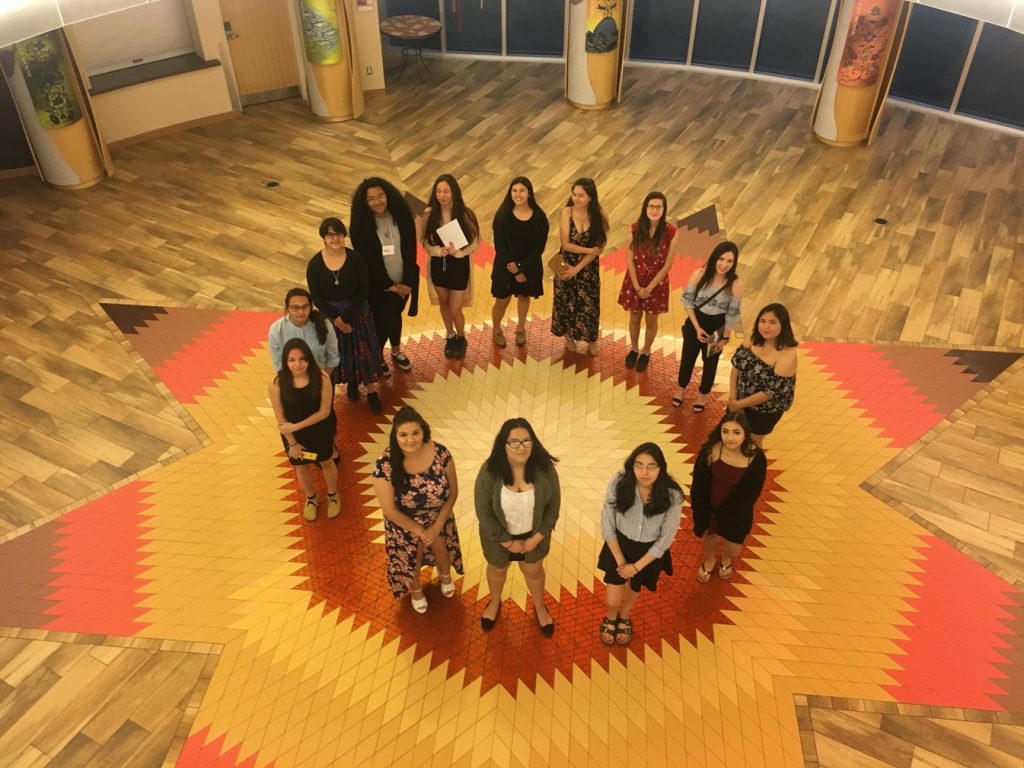A network of innovation and advocacy
The Natural Sciences and Engineering Research Council of Canada’s (NSERC) Chairs for Women in Science and Engineering (CWSE) programme has brought together a group of passionate individuals who aim to change the culture for women and under-represented people in STEM academic degree programmes and professions. Dr Jennifer Jakobi and Dr Catherine Mavriplis tell us more about this innovative and impactful network.
Why is equity, diversity and inclusion so vital to science and engineering?
Jennifer: Without diversity of people, you do not gain a rich perspective. Bias and blind spots occur, and solutions are narrower, less creative and might result in outputs without consideration for all people. There are too many examples of something being built for and from one lens that inevitably creates inequities for others.
How can we tackle the barriers facing women and under-represented groups in STEM?
Catherine: Although there are some common threads to the barriers faced, we cannot overlook that there are elements unique to each ‘group’. The CWSE programme extends through K-12 (in the UK, reception to year 13) and beyond, through higher education and the job market, as well as into the home, to create a full circle of support. Irrespective of the type of barrier, the need to change culture and awareness is always a starting point. For youngsters, this begins in the classroom and at home. In the classroom, hands-on experiences in an inclusive learning environment foster awareness of the diversity of STEM.
Jennifer: STEM fields touch our lives in so many ways, and young people need the opportunity to explore and engage in them. Experiential learning creates this opportunity and starts a conversation which can spill over into the home. When discussion around STEM becomes positive and inclusive to all, the landscape of people involved in it will become more diverse.
How are you raising the profile of women in science and engineering?
Jennifer: Each Chair of CWSE has unique initiatives that are specific to regional needs, as well as their independent programme aims. However, we are creating a consistent visible presence that our audience can recognise and relate to. We create programmes to encourage young people to participate and, over the years, these programmes have focused on girls/women and Indigenous, Black, and immigrant persons. The Chairs mentor young people who then become leaders in their programmes. This creates a visible presence for other youth to see themselves in STEM; programme participants become role models themselves.
What outreach is CWSE leading?
Jennifer: The programme continuously innovates to attract young women and diverse populations to the fields of science, engineering and technology. The programme is very busy, including hands-on career exploration, science-based camps, lab and field-based research experiences for Indigenous high school students, design and entrepreneurship experiences for French-speaking girls, makerspace design workshops for kindergarten classes, and social media campaigns showcasing unusual science and engineering jobs. It’s important to market our STEM fields as fresh, exciting and pertinent avenues to fulfilling kids’ dreams and ambitions.
How is your community growing and having impact across Canada?
Catherine: CWSE has grown through networking, having a strong presence on social media, running national conferences and workshops, and connecting with like-minded organisations, universities, schools and Indigenous communities. We also support national conferences for women in targeted sectors such as Women in Mining or Women in Computing, connecting women directly to employers and sensitising employers to diversity issues.
Jennifer: We have a named award: the Margaret-Ann Armour National Conference Award. This supports conference activities and events that increase knowledge and foster networks for women and under-represented persons to explore scientific learning opportunities. We are in the process of creating an award to support individuals to attend conferences that otherwise would be inaccessible to them due to various barriers, such as finances and caregiving.
What have been the programme’s key successes so far?
Catherine: CWSE’s success lies within a long line of people contributing towards a goal of changing the culture in STEM, with the Natural Sciences and Engineering Research Council of Canada (NSERC) providing ongoing support. Over the years, the agency and many individuals at NSERC have actively contributed to our programmes and supported the Chairs through various evolutions of equity, diversity and inclusion (EDI) initiatives. We also have a tremendous community outside the network, including Indigenous community partners and the Canadian Black Scientists Network.
Jennifer: The programme has been successful in national and international reach. We have established ourselves through innovative and iconic programming, and are allies and sponsors to many individuals and organisations, such as the Canadian Coalition of Women in Engineering, Science, Trades and Technology. We actively work on interventions to increase recruitment and retention, such as teacher training, workshops for academic advancement, male allyship, and accessible learning. We have created, and are continually creating, new structures to ensure a living legacy such as a newly established national Canadian Archive for Women in STEM to preserve and record the accomplishments of women scientists and engineers in history.
© NSERC CWSE
© NSERC CWSE
Lab visit with Dr Jennifer Jakobi at University of British Columbia Okanagan
© NSERC CWSE
We are also keenly aware of intersectionality. The network has a longstanding track-record for EDI work beyond women. In recognition of this and current societal needs, we worked alongside the NSERC to delineate the evolution of the CWSE to the Chair for Inclusion in Science and Engineering (CISE). This first roll-out occurred in 2023 in the Atlantic Region of Canada, and the competition is now open in Quebec.
Catherine: Beyond the plethora of outreach, training, mentoring and research accomplishments of the 19 Chairs over the past 30 years, the programme has become a remarkable training ground for leadership. Of these 19 Chairholders, three have become university presidents, and several have taken on Provost, Dean, Associate Dean or other leadership positions. Beyond the Chairholders, many programme contributors and participants have risen through the leadership ladder and developed their own outreach, research and/or training programmes. Across the country, several new Chair programmes have been set up with private funds, and independent associations have benefitted from engaging the Chairs’ visibility and support to develop new proposals and attracting considerable funding from government or industrial sources.
What impact is the CWSE programme having on enrolment of women in STEM courses in Canada?
Catherine: Since the programme started in 1989, when only 2.9% of registered professional engineers in Canada were women, the participation of women in science and engineering studies and professions has risen steadily. Some universities are reaching 30% and 40% enrolment in undergraduate engineering programmes, while fields related to biological sciences that have traditionally been strong in women’s participation are also starting to see more women in the highest-level graduate programmes and faculty positions. While it is difficult to attribute national trends to the sole work of our network, the impact of CWSE’s innovations and advocacy can be felt not only in the enrolment numbers but also in the sheer range of vibrant outreach and research activities supporting the participation and advancement of women in these fields offered by universities across Canada.
Jennifer: The regional aspect of the programme means outreach is tailored to the geographical and population needs of the tremendously varied regions of the vast country of Canada. This enables enormous opportunity, and emphasises the need, to engage and include women across STEM sectors. Canada is seeing an increase in diversity of students in STEM degree programmes. Innovative activities in primary and secondary schools have fuelled young people’s excitement for the future, be it through developing apps for medical applications, studying ecological trends of biodiversity or learning to evaluate water quality in Indigenous communities and working for better infrastructure. Women in Canada are beginning to see themselves in the STEM workforce, and registered engineers have increased to ~15% women. Positive change is happening.
What are the next steps for your programme?
Catherine: As the landscapes for STEM and academia continue to evolve, the NSERC Program for Women in Science and Engineering is experimenting with a broader and more inclusive approach. The NSERC is currently piloting the new Chairs for Inclusion in Science Engineering Program building on the CWSE programme, to improve messaging to all equity-seeking groups and to multiply the numbers of Chairs, since the mandate of covering all EDI for all of science and engineering, for all K-12 to advanced career levels, and for the five vast geographical regions designed into the programme in the 1990s, is quite heavy for a single person to lead! In particular, there is more of an emphasis on intersectionality, allyship and deeper systemic change than was possible earlier with only five Chairs.
What advice would you give to anyone looking to replicate your community in other parts of the world?
Jennifer: The network of NSERC Chairs for Women in Science and Engineering is grateful to the Canadian government for establishing a national programme that recognises the success of women’s accomplishments as science and engineering researchers. The NSERC holds these women up as role models, while providing them with support and the vehicle to freely develop novel recruitment, retention and leadership resources that they deem appropriate for their region and the evolving landscape of STEM. Key features of the programme that could be replicated in other parts of the world are strong financial support, engagement of industrial or other partners to leverage the federal funds for the programme, support of academic institutions to lead and innovate in EDI, promotion at key events, and invitations to participate in policy forums.
What advice would you give to girls and young women inspired to explore opportunities in science and engineering?
Jennifer: The world is your oyster! If you want to make change in the world, think about how you can contribute through designing better products and technologies that place people, the environment and our planet at the centre of importance.
Catherine: Through science and engineering, you can make tremendous impact and contribute to creating a more just, clean and peaceful future.
 Dr Jennifer Jakobi
Dr Jennifer Jakobi
The University of British Columbia, NSERC Chair for Women in Science and Engineering (BC/Yukon)
Dr Catherine Mavriplis
University of Ottawa, Former NSERC Chair for Women in Science and Engineering (Ontario)
Connect with the NSERC Chairs for Women in Science and Engineering (CWSE):
National Network of CWSE/CISE Chairs
Westcoast Women in Engineering, Science and Technology (WWEST)
Do you have a question for Jennifer or Catherine?

Read about how Stemettes, an award-winning social enterprise based in the UK, is working to connect girls, young women and non-binary people with the world of STEM and STEAM:
www.futurumcareers.com/striving-for-a-curriculum-of-role-models








0 Comments